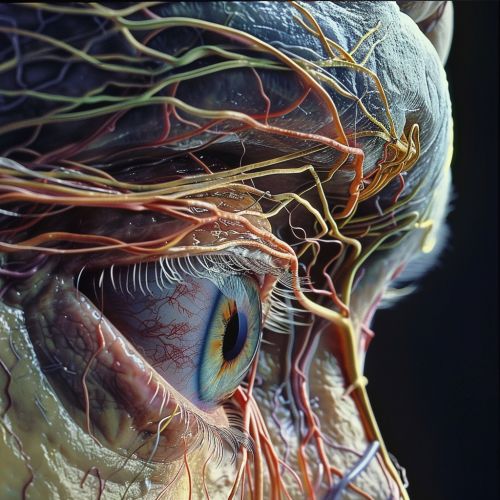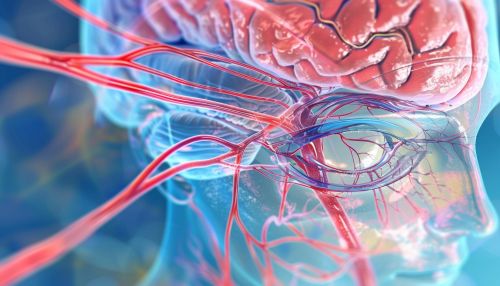Optic nerve atrophy
Overview
Optic nerve atrophy, also known as optic neuropathy, is a medical condition characterized by the degeneration or damage of the optic nerve, which is responsible for transmitting visual information from the retina to the brain. This condition can result in partial or complete vision loss, depending on the extent of the damage. Optic nerve atrophy is not a disease in itself but rather a sign of a potentially serious underlying condition that affects the optic nerve.
Anatomy and Physiology of the Optic Nerve
The optic nerve, also known as cranial nerve II, is a crucial component of the visual system. It consists of over one million nerve fibers that originate from the retinal ganglion cells in the retina. These fibers converge to form the optic nerve, which exits the eye through the optic disc and travels to the brain. The optic nerve transmits visual information to the lateral geniculate nucleus of the thalamus and then to the visual cortex in the occipital lobe.


Causes of Optic Nerve Atrophy
Optic nerve atrophy can result from various etiologies, including:
Ischemic Optic Neuropathy
Ischemic optic neuropathy occurs due to insufficient blood supply to the optic nerve, leading to tissue damage. This can be classified into anterior ischemic optic neuropathy (AION) and posterior ischemic optic neuropathy (PION). AION is often associated with conditions such as giant cell arteritis and non-arteritic ischemic optic neuropathy (NAION).
Glaucoma
Glaucoma is a group of eye conditions that damage the optic nerve, usually due to increased intraocular pressure. Over time, the elevated pressure can cause optic nerve atrophy, leading to progressive vision loss.
Optic Neuritis
Optic neuritis is the inflammation of the optic nerve, often associated with multiple sclerosis. The inflammation can cause temporary or permanent damage to the optic nerve fibers, resulting in atrophy.
Traumatic Optic Neuropathy
Traumatic optic neuropathy occurs due to direct or indirect injury to the optic nerve. This can result from head trauma, orbital fractures, or penetrating injuries.
Hereditary Optic Neuropathies
Hereditary optic neuropathies, such as Leber's hereditary optic neuropathy (LHON) and dominant optic atrophy (DOA), are genetic disorders that lead to progressive optic nerve degeneration.
Toxic and Nutritional Optic Neuropathies
Exposure to certain toxins, such as methanol, or deficiencies in essential nutrients, such as vitamin B12, can cause optic nerve damage and atrophy.
Symptoms
The symptoms of optic nerve atrophy can vary depending on the underlying cause and the extent of the damage. Common symptoms include:
- Decreased visual acuity
- Loss of color vision
- Visual field defects
- Blurred vision
- Reduced contrast sensitivity
- Difficulty with night vision
Diagnosis
Diagnosing optic nerve atrophy involves a comprehensive eye examination and various diagnostic tests, including:
Visual Acuity Test
This test measures the clarity of vision and helps determine the extent of vision loss.
Ophthalmoscopy
Ophthalmoscopy allows the examination of the optic disc and retina. In cases of optic nerve atrophy, the optic disc may appear pale and atrophic.
Visual Field Test
A visual field test assesses the peripheral vision and can help identify specific patterns of vision loss associated with optic nerve damage.
Optical Coherence Tomography (OCT)
OCT is a non-invasive imaging technique that provides detailed cross-sectional images of the retina and optic nerve head, helping to detect structural changes.
Magnetic Resonance Imaging (MRI)
MRI can be used to visualize the optic nerve and surrounding structures, aiding in the identification of any compressive lesions or other abnormalities.
Treatment
The treatment of optic nerve atrophy focuses on addressing the underlying cause and preventing further damage. Specific treatments may include:
Medical Management
Conditions such as glaucoma and giant cell arteritis require prompt medical treatment to reduce intraocular pressure or control inflammation, respectively.
Surgical Intervention
In cases of compressive optic neuropathy, such as those caused by tumors or orbital fractures, surgical decompression may be necessary to relieve pressure on the optic nerve.
Nutritional Supplementation
For toxic and nutritional optic neuropathies, addressing the deficiency or removing the toxic agent is crucial. Supplementation with vitamins and minerals may help in some cases.
Vision Rehabilitation
Patients with significant vision loss may benefit from vision rehabilitation programs, which include the use of low vision aids and adaptive techniques to improve daily functioning.
Prognosis
The prognosis of optic nerve atrophy depends on the underlying cause and the extent of the damage. Early diagnosis and treatment of the causative condition can improve outcomes and prevent further vision loss. However, once optic nerve fibers are damaged, they cannot regenerate, and any vision loss that has occurred is usually permanent.
See Also
- Retinal Ganglion Cells
- Multiple Sclerosis
- Leber's Hereditary Optic Neuropathy
- Giant Cell Arteritis
- Glaucoma
